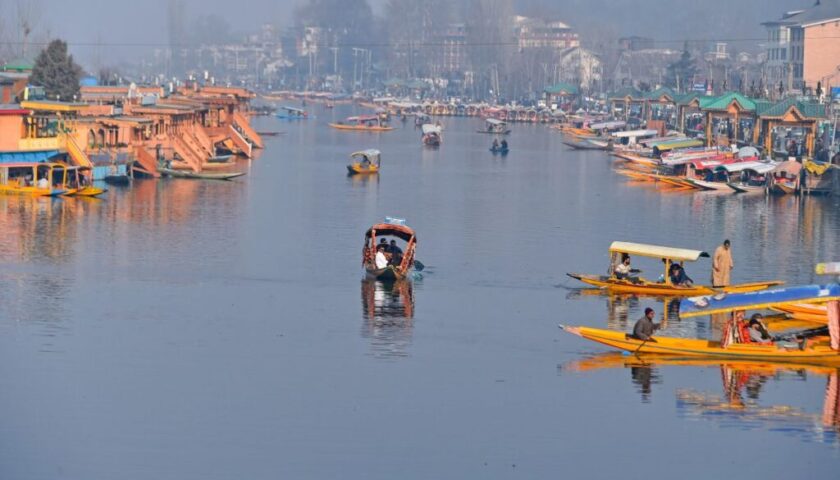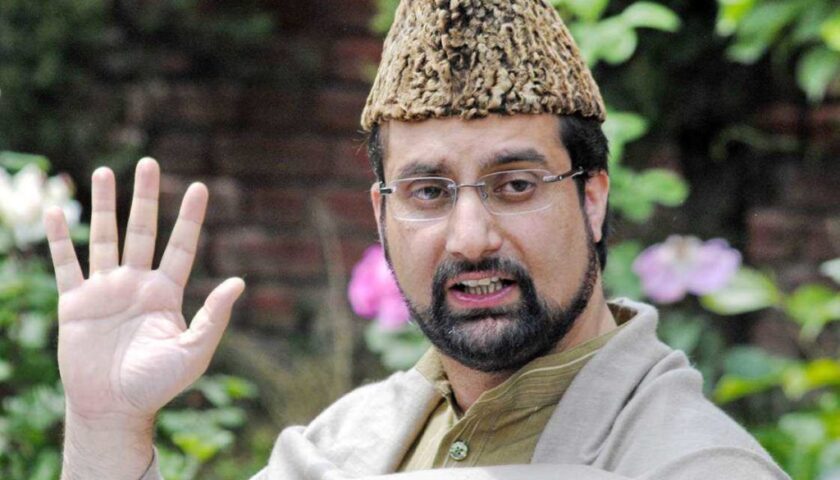Srinagar, 22 June 2025 : In an extraordinary reversal of meteorological norms, Srinagar—the summer capital of Jammu & Kashmir—was hotter than Jammu on Friday, recording a scorching 34.8°C compared to Jammu’s 33.0°C. This rare weather inversion marks a significant moment in Kashmir’s shifting climate narrative, as the Valley reels under one of its most intense and prolonged heatwaves in decades.
Friday’s temperatures, coupled with sleepless, sweltering nights, have left residents, tourists, and experts in a state of uneasy astonishment. From the snow-fed slopes of Gulmarg to the bustling lanes of Qazigund, Kashmir is sizzling—and sweating—through a summer unlike any in living memory.
Breaking Decades-Old Records: A Valley on Boil
The India Meteorological Department (IMD) has confirmed that the heatwave is not just a spike—it’s a statistical outlier. Several temperature records across the Valley have been shattered:
-
Srinagar:
-
35.5°C on Friday – the hottest June day in 20 years, and nearly 7°C above normal
-
23.2°C night temperature – the 4th warmest June night since 1891
-
-
Qazigund:
-
Hit 35.0°C, the highest since 1988
-
-
Kokernag:
-
Scorched at 34.2°C, just short of its all-time high
-
-
Kupwara:
-
Climbed to 34.5°C, an unusual peak for the border town
-
-
Pahalgam:
-
Touched 29.6°C, which is 5.5°C above average for the cool highland retreat
-
-
Gulmarg:
-
Even the ski haven wasn’t spared, logging 25.9°C, over 3.5°C above normal
-
The “Wahrat” Effect: Kashmir’s Harsh 21-Day Summer Spell
Locally, Kashmiris refer to this intense phase as “Wahrat”—a traditional 21-day period of blistering summer heat that typically begins around mid-June. But this year’s Wahrat is harsher, longer, and more alarming, marked by record high temperatures and poor nighttime cooling.
“Wahrat has always been a seasonal reality—but this is something more extreme. The night temperatures are especially worrisome, disrupting sleep cycles and increasing health risks,” says Dr. Arshid Wani, a climate researcher at the University of Kashmir.
Climate Change in the Himalayas: This is the Warning
Experts say this isn’t just an uncomfortable summer—it’s a climate alarm bell. The Himalayan region, once considered a climatic buffer zone, is now experiencing rapid warming, reduced snowpack, erratic rainfall, and changing wind patterns. Kashmir is no exception.
“This is a symptom of long-term climate shifts,” warns Dr. Sonam Lotus, a veteran meteorologist and former head of IMD Srinagar. “Our winters are warmer, snowfall is erratic, and summers are growing hotter every year.”
Several long-term factors are being blamed:
-
Deficient snowfall in the past two winters
-
Poor spring rainfall, leading to dry soil and heat retention
-
Urban heat island effect in Srinagar and surrounding towns
-
Shrinking vegetation and snowline retreat in mountain zones
-
Deforestation and poorly planned development disrupting natural climate regulators
Public Health, Power, and Water Strain Mounts
With mercury rising and nighttime temperatures offering no relief, heat-related illnesses are on the rise. Hospitals across Kashmir have reported a surge in dehydration cases, sunstroke, and aggravated respiratory issues, especially among the elderly and children.
The Jal Shakti Department has issued warnings of increased demand and falling water pressure in many areas, while KPDCL (Kashmir Power Distribution Corporation Ltd) faces unprecedented peak hour electricity loads due to widespread use of coolers and fans—uncommon even a few years ago.
“We’re used to heating woes, not cooling demand. The infrastructure isn’t ready for summers like this,” said a senior KPDCL official.
Tourism Feels the Heat: Cool Retreats Not So Cool
Traditionally, tourists flock to Kashmir in June for its cool breeze, misty forests, and alpine charm. But this year, even hill stations like Gulmarg and Pahalgam are experiencing temperatures unheard of in their tourism brochures.
“We came to escape Delhi’s heat, but it feels the same here. This isn’t the Kashmir we imagined,” said Prerna Malhotra, a tourist from Noida.
Hotels are struggling with water shortages, overbooked AC rooms, and unexpected complaints of heat fatigue from visitors.
Relief on the Horizon? IMD Forecast Offers Hope
The Meteorological Department forecasts a brief respite over the next few days:
-
June 22: Intermittent cloud cover, light rain, and thundershowers
-
June 23–24: Temporary dry spell
-
June 25–27: A more sustained rainy phase is likely, which could cool temperatures and replenish water levels
However, meteorologists caution that such relief is often short-lived in the face of broader climate patterns.
What Must Be Done: From Alarm to Action
This is a moment for policy-makers to act, not just comment. A record-setting heatwave in a temperate zone like Kashmir demands urgent adaptation and mitigation planning:
-
Implement a Kashmir-Specific Climate Resilience Plan, focusing on cooling infrastructure, water management, and forest cover restoration
-
Public education campaigns about heatstroke symptoms, hydration, and adaptive behavior
-
Introduce heatwave alerts and cooling centres in schools and hospitals
-
Revise building codes to include passive cooling designs and reflective materials
-
Monitor urban sprawl and protect green zones from encroachment
“Kashmir is at the crossroads of climate change. What we do now will decide whether the Valley remains habitable—or hostile—in the decades ahead,” warns Dr. Nilofar Ahmed, a regional climate policy advisor.
Bottom-Line: When Srinagar Burns, It’s Time to Wake Up
The symbolism of Srinagar out-heating Jammu is more than meteorological. It reflects the unfolding fragility of the Himalayan ecosystem, and the urgency for governments, citizens, and institutions to acknowledge that climate change is already here.
Kashmir’s summers were once poems of breeze and shade. Today, they are warnings etched in fire.




